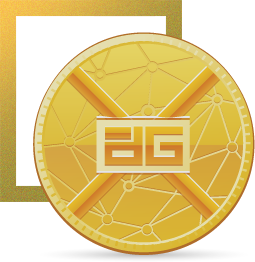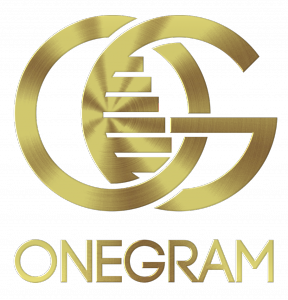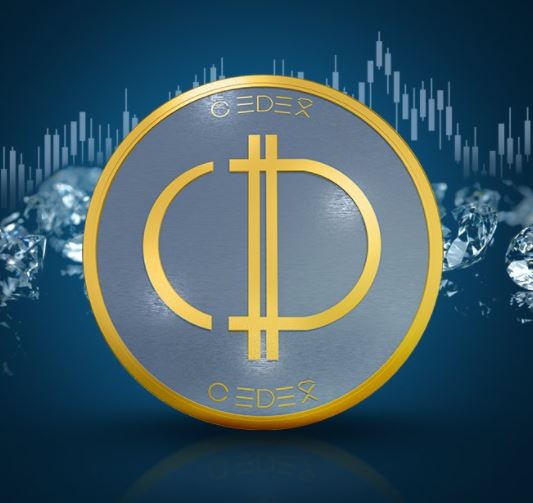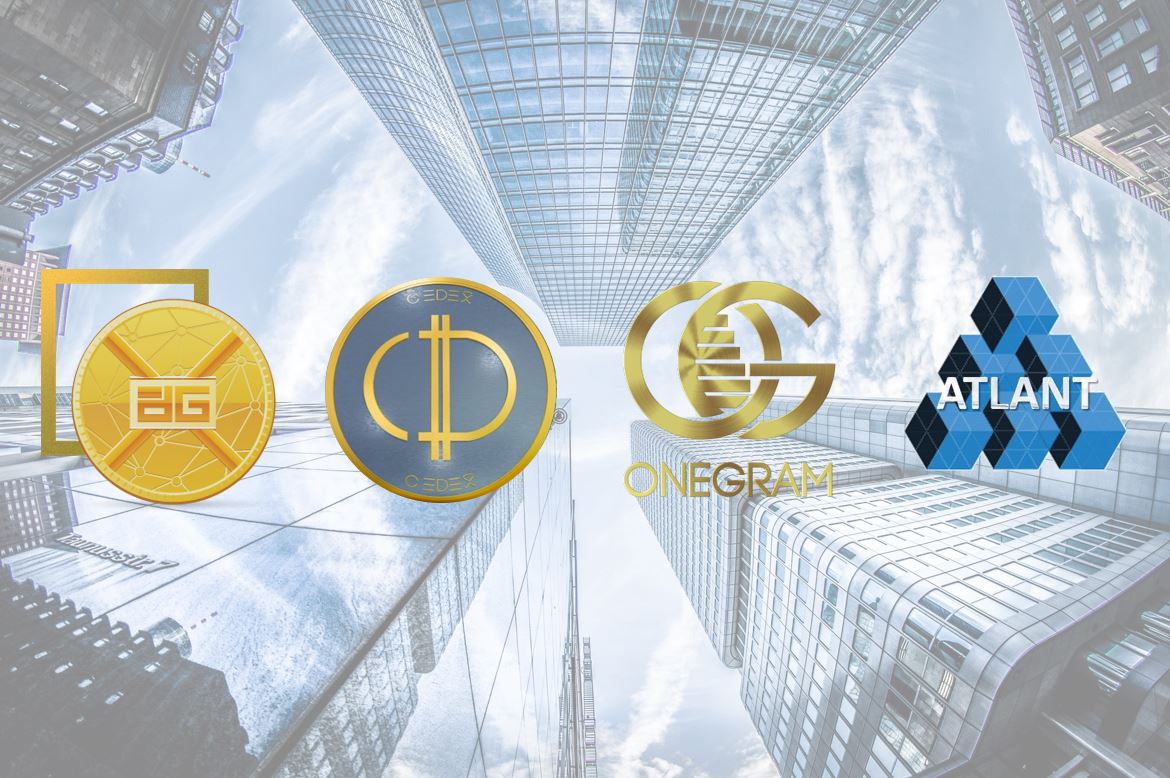When people begin learning about cryptocurrencies, one of the first mental hurdles to overcome is often the understanding of how digital currencies that aren’t backed by anything tangible can have real value. Even though the US abandoned the gold standard in 1971 and many other countries did so well before then, the existence of paper cash and coins makes the value of fiat currency easier to accept for the majority of people.
However, digital currencies offer a number of advantages over their fiat counterparts, as outlined in the “What Makes Bitcoin Valuable?“ section of this comprehensive article explaining Bitcoin. They are more durable, divisible, fungible, scarce, and transferable than fiat currencies. Now, it is becoming increasingly popular in the blockchain space to try to capture some of those benefits and apply them to traditionally valuable, real-world assets. This trend, called tokenization, is beginning to show a lot of promise for assets such as gold, diamonds, and property, among others.
This article will provide an overview of some of the top tokenization projects and offer some analysis as to whether or not this new class of cryptocurrency is going to catch on with investors.
Stablecoins
Before getting to the meat of the article, it’s worth briefly mentioning a class of asset-backed cryptocurrencies called stablecoins. Stablecoins, as the name implies, are cryptocurrencies whose values are kept stable by pegging them to another asset. For example, the popular stablecoin Maker Dai is designed to have a fixed value such that 1 Dai = US$1.
Stablecoins are still very new, and the mechanisms used to keep values pegged to underlying assets are complex. Unfortunately, the technology is still unproven, and people who put a lot of money into them are often taking on much more risk than they’d typically be led to believe.
That being said, stablecoins could play a very useful role in the cryptocurrency market in the future, after the technology has established a proven track record.
Digix Gold Tokens (DGX)

The most well-known tokenization project to date is DGX – a token that is backed by physical gold bullion, with 1 DGX equalling 1 gram of 99.99% LBMA-standard gold, which is kept in a custodial vault in Singapore. DGX token holders can redeem their gold by mail or pick it up personally in Singapore if they so choose.
DGX is one of two tokens associated with Digix Global, the other of which – DGD – is currently one of the top Ethereum tokens and is used to cast votes in the DigixDAO governance system that allocates funding for other blockchain projects.
There are a couple of advantages to buying DGX instead of directly purchasing gold. Tracking gold ownership on a blockchain offers immutability of ownership, transparency, and auditability. DGX tokens are also significantly more liquid than physical gold, as they offer fast and easy transferability and can be traded 24/7, 365 days on cryptocurrency exchanges.
To learn more about Digix Global and DGX tokens, check out their whitepaper.
OneGram Gold Tokens (OGC)

Digix isn’t the only company tokenizing gold. Another is OneGram, a Dubai-based startup which is unique for being the first ever Shari’ah (Islamic Law)-compliant cryptocurrency.
Followers of the Muslim faith who observe Shari’ah Law can only invest in real-world, physical assets and are forbidden from speculative investments. As a result, the cryptocurrency markets had been off-limits to citizens of the Gulf nations until OneGram’s conception.
Due to its historical stability, gold is an ideal real-world asset for Muslims to invest in. By tokenizing it, OneGram is able to bridge the gap between the growing fintech industry in the Middle East and the innovative cryptocurrency space.
One key difference between Digix and OneGram is that the OGC tokens are designed to grow in value (in terms of gold), while the DGX token value stays constant. Like DGX, every OGC token is backed by one gram of physical gold when the cryptocurrency launches. However, 70% of the transaction fees accumulated by OneGram will be reinvested back into gold while the supply of OGC is held constant, meaning that the amount of gold backing each token will increase over time.
OneGram provides an investment option for Muslims that has limited downside and virtually unlimited upside. In addition, all transactions are private and nearly instantaneous.
To learn more about OneGram, you can read the project’s whitepaper.
CEDEX Diamond Tokens (CEDEX)

Of all assets, diamonds are perhaps the one that can benefit most from the advantages of tokenization. CEDEX is the first project to make diamond tokenization a reality with their revolutionary blockchain-based diamond exchange.
There are 3 reasons that diamonds are such a good application for blockchain technology. The diamond market has a lack of transparency, lack of standardization, and lack of liquidity that prevent it from being accessible to the public.
Each of these problems is more severe for diamonds than other assets due to the fact that diamonds aren’t fungible – each stone has unique characteristics that make it impossible to evaluate based on any single metric alone.
CEDEX solves the standardization and transparency problems with a machine-learning algorithm they’ve developed called the DEX, which boasts a pricing accuracy rate greater than 99.5%. That consistency, combined with greater efficiency and availability, will help make the DEX a superior alternative to human diamond appraisers.
The blockchain-based exchange is the perfect place to then list diamonds once they’ve been priced, so that they can be traded in the peer-to-peer marketplace. Middlemen are extremely costly in the modern diamond business. By cutting the middleman out of the equation, CEDEX’s exchange will be the best place for both sellers and buyers to get a fair market value for diamonds. That’s particularly revolutionary for sellers, who today face losses of around 30% to 50% when trying to resell stones to pawn shops or retailers.
CEDEX completed their public sale earlier this April, after selling 25 million CEDEX coins in a matter of hours in the token presale. The CEDEX platform is scheduled to officially launch in Q3 2018, at which point the diamond revolution will be fully underway.
To learn more about CEDEX, you can read the project’s whitepaper or lightpaper.
ATLANT Real Estate Tokens (ATL)

Valued at well over $200 trillion, real estate is the largest asset class in the world. ATLANT is a platform that aims to make passive income from real estate ownership feasible for investors without the deep pockets that are typically necessary to be a player in the real estate game.
Users of ATLANT’s blockchain-based platform can buy unique, property-specific cryptocurrency tokens that represent partial ownership of a given real estate asset. Token holders will then be paid their portion of the rental income from those properties.
Tokenized real estate ownership provides several benefits. For one, it gives people the ability to invest small sums of money into valuable properties that they wouldn’t be able to afford in their entirety.
In addition, this partial ownership can be far more passive than typical real estate ownership, as it doesn’t include any time commitment for property upkeep or management. Moreover, properties from all over the world will be listed on the ATLANT platform, giving investors the ability to speculate on specific locations that could see a surge in value and to diversify their portfolios in order to minimize risk.
When a new property is listed on the ATLANT platform, it will be divided into tokens, where 1 token = 1 mm2 of the total property. Tokens will then be made available to investors in a property token offering (PTO). ATLANT will hire local property management companies to take care of the buildings so that investors don’t have to worry about anything. If token holders feel that the company isn’t doing a good job, they can hold a vote to find a replacement.
In addition to these tokenized real estate holdings, ATLANT will offer a peer-to-peer rental platform to compete with centralized rental services like Airbnb. Because it is decentralized, the ATLANT platform can reduce middleman costs substantially – enough to make prices as much as 20% or 30% cheaper than existing rental services.
Tokenized real estate has the potential to change the entire global investment landscape. By lowering the barrier to entry for real estate ownership and making it accessible to small and medium net-worth individuals, ATLANT might well become one of the most globally impactful blockchain projects out there.
To learn more about ATLANT, see the project whitepaper.
Are Asset-Backed Cryptocurrencies a Good Thing?
There’s a debate to be had as to whether asset-backed cryptocurrencies really belong in the same category as other cryptocurrencies. They are almost unavoidably more centralized than most of their purely digital counterparts because of the centralized management of the underlying assets.
In the case of the 4 projects discussed above, blockchain technology is used to create an immutable, distributed, and transparent record of asset ownership and to increase liquidity in those markets. At the same time, though, trusting intermediaries is necessary in all 4 cases – whether they be storage and transportation services or, in the case of ATLANT, the project team that hires property managers and those property managers themselves.
There’s no doubt that having a physical asset backing a digital currency makes decentralization more difficult. But, from the perspective of a general investor who isn’t so focused on decentralization, the process of tokenization can increase transparency and liquidity in every market it touches. Decentralization simply isn’t necessary or even possible in some instances, and tokenization can still bring many benefits even in those cases.
Last Thoughts
To date, blockchain has had practically zero impact on real-world assets. However, considering how illiquid many assets are, tokenization is certainly a promising trend for the future.
Digix is the best known of the tokenization projects right now, but OneGram’s growth-inducing token economics and focus on Muslim investors who previously couldn’t own cryptocurrencies makes it more interesting and potentially profitable for investors.
CEDEX, meanwhile, is attempting to make diamonds a publicly tradable asset and unlock a multibillion-dollar investment market. With their strong team, valuable partnerships, and innovative technology, they appear poised to succeed. If so, it would be one of the most impactful achievements of blockchain technology thus far.
Most exciting of all, though, is ATLANT. Passive income through real estate ownership could be life-changing for many people, and ATLANT uses blockchain technology to make it accessible for just about anybody. Real estate is quite possibly the most exciting application for tokenization, and it will be interesting to keep an eye on ATLANT and any competitor projects in the coming years.
Related: 4 Blockchain Projects that Will Change the Real Estate Industry

